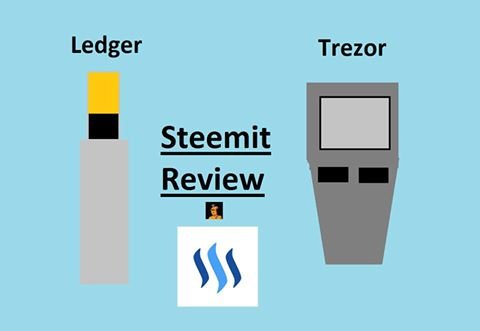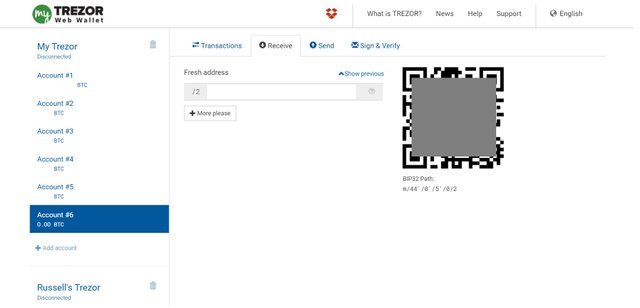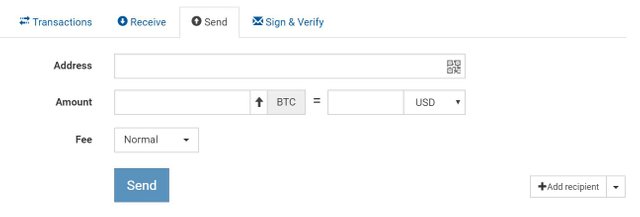Bitcoin Hardware Wallets - Trezor vs Ledger Nano and HW.1 [Review]

Bitcoin hardware wallets make safely storing your coins a breeze. They are more durable than paper wallets, while also giving you some added benefits. Let's take a look at the two that I own and which one I prefer:
Ledger Nano
Ledger recently came out with the Nano S. I don't have this wallet, but it is essentially a Nano with the added benefit of a screen along with a couple buttons. This makes the device more secure, while also making it more usable.
I own the Nano and I like it's interface. Ledger installs an extension so that you can access your wallet:

Logging-in can be an issue, as if you enter the wrong pin number three times, you will need to use the recovery seed in order to reactivate the USB. This does not have to be done consecutively, either. I noticed that I would tend to "fat-finger" my log-in occasionally, and ended up needing to recover my Nano a couple times. I do not like this aspect of the Ledger, as it would seem to potentially expose my keys more than I would like.
If you can over-look that one potential annoyance, there is a lot of value to be had for around $30. A variety of Ledger Wallets are available on Amazon, OpenBazaar, and through Ledger's store directly. The Nano S runs for about $65 and seems to be worth it, if you want to spend a little extra.
I also have the HW.1, which is a cheaper alternative, but I would not really recommend it, as it does not feel very durable. They're OK for a first wallet, but I'd just take that first step up to a Nano at the very least.
Bitcoin Trezor
The Trezor can be accessed directly through your web browser. No pin is needed to view the current state of your wallet, if you choose to "remember" it, when the option prompts you.
The interface is just as simple as Ledger, although it is laid out a little differently:

You can see that under My Trezor there are multiple accounts set-up. This allows Jess and I to have things like long-term and short-term savings, trading accounts, mining accounts, and more. These can all be labeled through DropBox, but I am too lazy for that.
You can also see that I have an additional Trezor saved, so I can keep an eye on Jessica's family's bits. It also gives us the option to send them some from time to time without having to email them for a new address.
When you send Bitcoin from your Trezor you will first be pleasantly surprised with the layout:

Fees are selectable, so if you aren't in a rush, you can save a little during peak times. You can also select the arrow under the amount field. This will send the maximum amount from that wallet, without having to calculate the fees manually.
When you enter your pin to access the Trezor, you don't hit any numbers. A screen pops up that looks like a tic-tac-toe box on your browser. You then look at the Trezor, as it will then randomly generate the location for each number. You then select your pin number by clicking the boxes that correspond to the numbers on your Trezor.
This makes the Trezor very secure, as no one can actually see your pin, even if your computer is compromised, while your keys never leave your wallet. You authenticate the transaction through the Trezor to ensure that the amount and the address you are sending to is accurate. This takes a couple steps to help prevent mistakes.
Trezor also allows integration with multiple other cryptocurrencies, and most recently added features to integrate with GitHub. There are many additional uses available and actively getting developed that are well worth looking into.
At $99, the Trezor is certainly more expensive than Ledger's products, but from my experience, the extra money is worth it. The Trezor is available on OpenBazaar, Amazon, and through SatoshiLabs.
Alternatives and Add-ons
Recovery seeds are very important with each wallet, as they are your only hope if anything were to ever happen to your wallet. I recently got a CryptoSteel to secure my keys in the event of a fire. While not essential, I feel that it is a good "add-on" as your wallet starts to get more full.
Keep Key recently announced Shapeshift.io integration. This is very appealing, as one could hop between coins directly on their hardware wallet. It's priced at $99, just like the Trezor, and may be something for me to consider trying at some point down the road. I don't have a need for it now, but I always like trying out new crypto gear.
Open Dime is a newer hardware wallet, that is actually disposable. It's meant to be used like cash, so you hand someone physical Bitcoin for your transactions. When they want to redeem their coins, they simply snap a piece of the thumb drive off, enabling the private keys. Now, bits can be sent wherever you'd like, but the device is no longer as reusable. It's an interesting concept.
Piper Paper Wallet is an offline paper wallet printer. I actually bought one and use it every now and again to help explain or give away bitcoin. It works by simply pressing the button after it warms up. You can either save the generated keys on the device or you can have it forget them. I find that by demonstrating Bitcoin through it, people find some of the foreign concepts to be easier to understand.
There are others in the works and the space is certainly worth keeping an eye on.
Conclusion
I pretty much stopped using my Ledger wallets once I got my Trezor. I still use them occasionally for various reasons, but Trezor is my wallet of choice. The benefits are simply too much to deny.
If you are just getting into Bitcoin and crypto through Steemit, then I would recommend starting with one of Ledger's cheaper models. If you are thinking more long term then I'd look at the Ledger Nano S, the Trezor, or the KeepKey.


I don't have the Trezor, but I do have the Ledger Nano and Nano S, which I use to store Ether. My favorite hardware wallet is the Keepkey wallet. I bought a Case wallet, but don't like it. Although I have some bitcoin stored in Mycelium and Airbitz on my phone, most of my bitcoin is either in my Keepkey wallet or in paper wallets.
I'll be glad when Trezor can store ETH. They've been slow developing it, but better to get it right than oopsie. I've considered Keep Key too. It looks pretty similar to Trezor, but with more options.
I bought and used the Tezor, works great, very easy to use!
Derek, it has been a while since this review. Any further thoughts on hardware wallets? I want a Nano S, but they seem to be unavailable unless you are willing to pay $200 for one, or wait an unknown number of months for an order to come direct from the factory. Since I will be back in the USA for just a few days in the next couple of weeks, I am considering the HW.1 since I could at least get my hands on one! Any thoughts?
P.S. This review popped up at #2 when I searched DuckDuckGo for HW.1 vs Nano S.